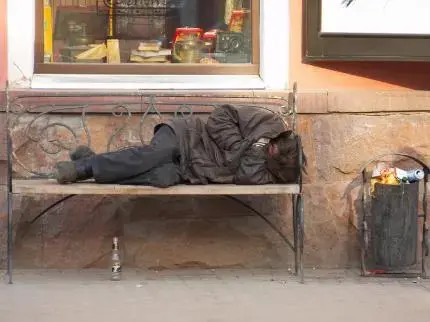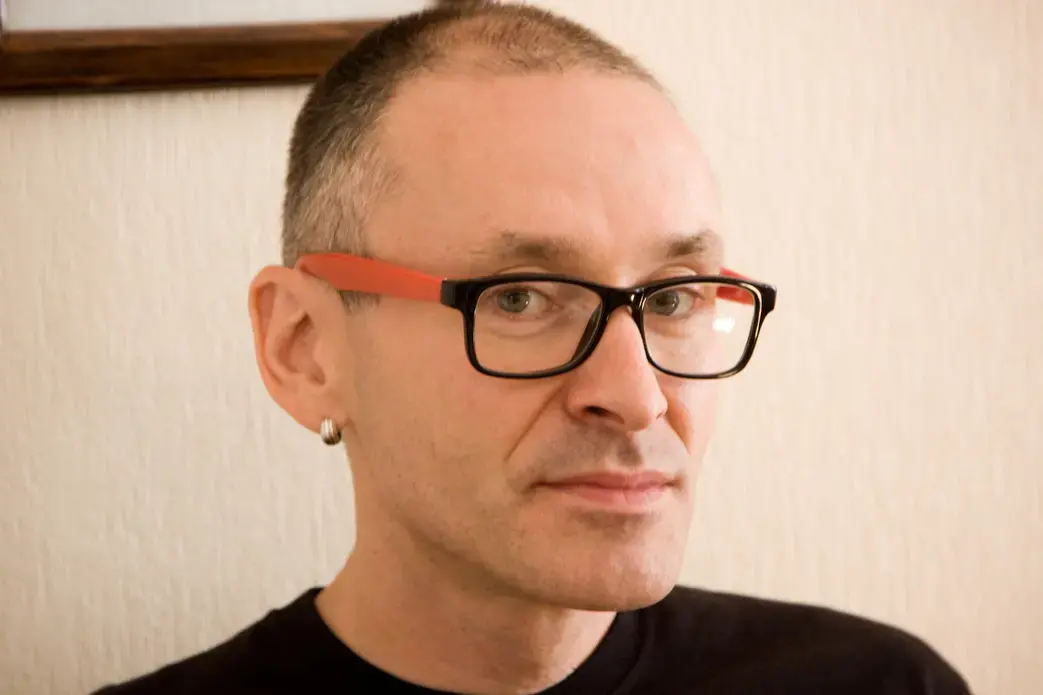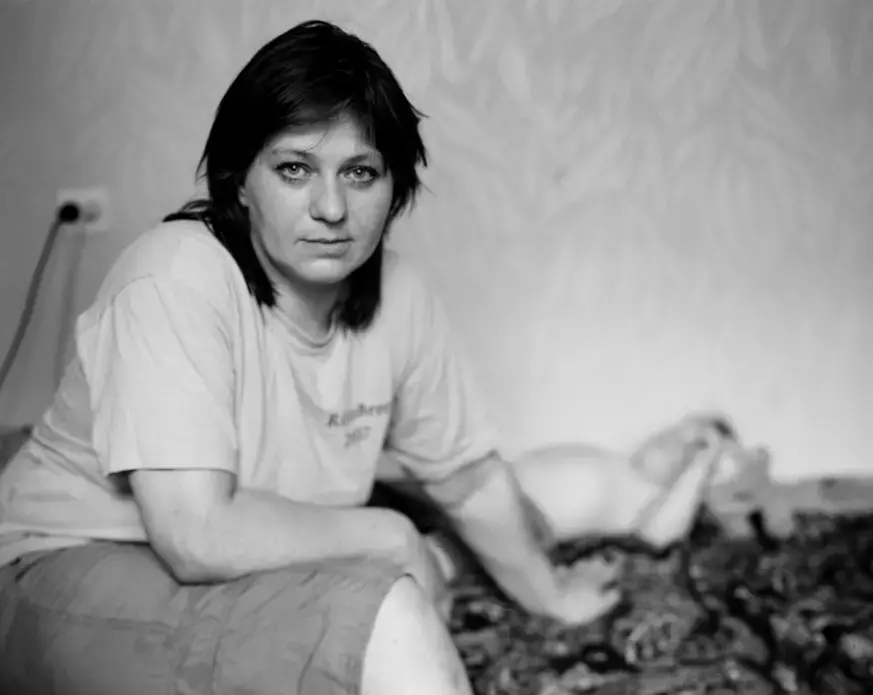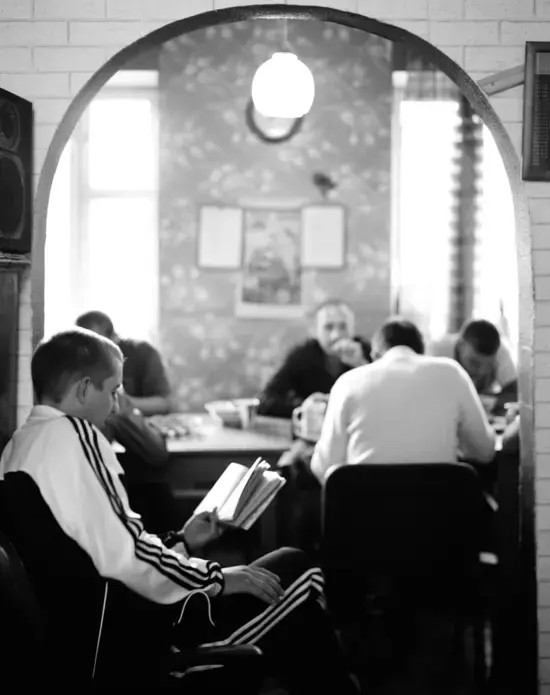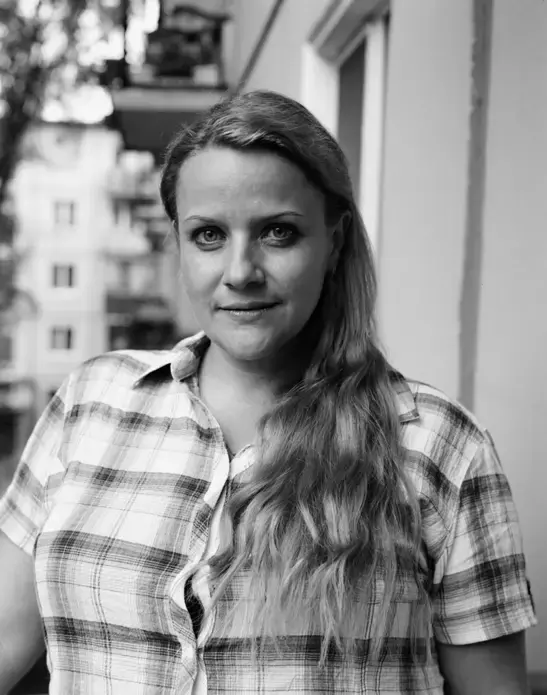Imagine a country with a heroin problem. It has millions of people who have used the drug and an entrenched underclass of dealers and suppliers. Because heroin users like to inject the drug intravenously, regardless of how old or contaminated their syringes may be, this country has also developed an AIDS problem. It is in fact facing two epidemics: one of heroin use, the other of HIV/AIDS.
The threat to the national health is obvious, but elected officials say little. The public looks upon drug users, and upon people with HIV/AIDS, with indifference or scorn. The government could take action but doesn't. So the epidemic spreads. Millions of unnecessary deaths result.
Americans shouldn't have a hard time imaging such a place; we need only look back to the United States of the early 1980s. In Vladimir Putin's Russia, one needn't look back—just looking around should suffice.
In a country of 143 million people, between 840,000 and 1.2 million are HIV-positive, according to a 2009 estimate by the Joint United Nations Program on HIV/AIDS (UNAIDS) and the World Health Organization (WHO). That means Russia has one of the highest percentages of HIV-infected people in the world, outside sub-Saharan Africa; Robert Heimer, an epidemiologist at Yale who has been studying the intersection of Russia's heroin and HIV/AIDS epidemics, says as many as five percent of all young people are infected.
UNAIDS also reports that 1.8 million Russians are current injection drug users. "Unscientific" is the kindest word one can use to describe the few drug treatment options that are available; public education about HIV and AIDS is almost nonexistent. Opiate substitution therapies such as methadone maintenance—the gold standard of heroin addiction treatment—are illegal.
In recent months, Russia has rejected millions of dollars from the Global Fund to Fight AIDS, Tuberculosis and Malaria, largely because it doesn't want to follow international protocols for fighting HIV/AIDS, such as distributing clean needles to injection drug users. Nongovernmental organizations that advocate harm reduction strategies—needle exchanges, providing condoms to sex workers—face police harassment and criminal penalties.
Russia's only significant response to the crisis has been to make anti-retroviral (ARV) drug therapy available to people with full-blown AIDS, but heroin addicts are ineligible. There is anecdotal evidence, some of it reported in the medical journal The Lancet, that even non-heroin addicts must cope with ARV drug shortages.
"The Russian government's strategy of treating drug use and tackling its HIV problem is neglect and denial," Anya Sarang, a Moscow-based public health activist, recently told me. "It is totally opposing all the effective interventions that are commanded by international organizations, while they're not offering anything to prevent the spread of HIV among injection drug users."
This two-front failure—against intravenous drug use and against the spread of HIV—is at first glance hard to fathom. How could a country so ambitious of first-world status blithely allow millions of its own citizens to die needlessly, especially at a time when the rest of the world can visit and see this disheartening spectacle up close? But Russian leaders don't want to be told what to do by the West, even if this means embracing magical thinking when it comes to public health policy. And there's something else at work. For HIV and AIDS haven't struck all segments of the population equally; their victims are members of groups the country views as undesirables: sex workers, gay men, heroin addicts.
"I think," says epidemiologist Robert Heimer, "some people in the Russian government actually believe that these people are not redeemable and not worthwhile human beings."
The epidemic started with heroin, in the early 1990s. The context is well known: the Soviet Union was collapsing, borders were opening, the state's control of its population was evaporating. Young people were poor, unemployed, and eager to try anything Western: music, fashion, drugs—all of which were available.
Heroin use exploded in the late 1990s, much as it had in urban ghettos of the United States in the mid-1960s and again in the late 1970s. But there were important differences in these two national experiences with the drug. Obtaining a steady supply of heroin was a challenge for American criminal organizations, as traffickers needed to move it overseas from the "Golden Triangle" of Laos, Burma, and Vietnam, or from Turkey. Law enforcement could attack the few supply lines that, say, the Genovese crime family of New York City had established, and have considerable effect on whether the drug was available on the streets of Harlem. The dismantling of those lines in the early 1970s helped end the epidemic that began in 1965. Heroin became harder to find, expensive, and, with a street-level purity of five percent, unable to provide sufficient bang for the buck.
Russian traffickers in the 1990s faced no such geographical obstacles, largely because Afghanistan had emerged in the late 1980s as the world's largest producer of opium and the dominant supplier to Europe. Key trafficking routes ran through Kazakhstan and Tajikistan, along Russia's massive southern border. It didn't hurt that in those chaotic days, elements of law enforcement were complicit with drug traffickers. In St. Petersburg I spoke with a thirty-six-year-old woman named Olga who dealt heroin in her building complex during that time; I asked whether she ever feared getting caught.
"I can definitely tell you I wasn't afraid of the police," she said.
The primary way Russians used heroin—what experts call "the route of administration"—was intravenous injection. This made Russia different from the United States and Western Europe, where, since the mid-1990s, heroin users have snorted the drug in its powdered form, or inhaled its fumes (often referred to as "smoking"), with only a small percentage depending on needle injection, and then only as a last resort. Russians started with needle injection (many Russians grow up learning how to use syringes to inject medicine and therefore lack the aversion to needles Western users have) and have never bothered with less efficient ways of getting the drug into their systems.
In Russia, as in the US and Europe, heroin use is often a social activity, especially among new users. So hundreds of thousands of heroin users in Russia, without knowing it, exposed themselves to an array of infections through needle use: tuberculosis, hepatitis, HIV.
During a recent trip to St. Petersburg, I was struck by a story told to me by a forty-year-old drug addiction counselor named Timur. He works out of a small, ground-floor office, and spent nearly two decades using heroin. It was in 1991, the same year that the Russian Federation banned the Communist Party, that Timur, then nineteen, decided to record a rock-and-roll album with friends. So one night they lugged their instruments and a cumbersome reel-to-reel recorder to a friend's apartment for what turned out to be an uninterrupted, two-day combination jam session and party.
"Freedom was quite unexpected for many people," Timur says. "It was just wonderful."
Only there was heroin at that party as well as freedom.
"Among my friends and acquaintances from that night, there are just a handful that are still alive," Timur told me.
The dangers of contracting HIV from shared needles were familiar to the international community in the 1990s, but few Russians were made aware of them, although the relationship between heroin use and HIV/AIDS was obvious. As Judyth Twigg noted in a 2007 report for the Center for Strategic and International Studies, there were two hundred and fifty thousand official cases of HIV by 2002, with eighty-seven thousand new cases just in 2001, almost all the result of injection drug use. The public health threat was met, Twigg remarked, with awkward silence.
People who experienced the new social and chemical freedom of the 1990s today share a numbed awareness of how little was done. "Everyone was solving their own problems," Alex, a thirty-two-year-old recovering heroin user, told me. Alex grew up outside of Moscow, but our conversation took place four hundred miles to the north, at a residential drug and alcohol recovery center in Pushkin. "We had no information about the world. Lots of new things appeared in our life, drugs too, and we just didn't know how to manage them. We lost, somehow. We lost ourselves in it, in all those new things in life."
"Our government also was not thinking about the country," Alex continued. "And this is the main problem of Russia, through all of its history."
The people most at risk for contracting HIV live beyond the reach of what few government measures exist, or avoid government altogether because of the penalties involved with being "deviant." Heroin addicts, for example, must officially register. Once registered, they cannot have driver's licenses; they may lose their status as university students; they cannot hold many jobs. Heroin possession is a crime; repeat offenders face long prison sentences. The disincentives for disclosing substance abuse are not subtle.
The just under one million sex workers in Russia, for instance, live at the whim equally of pimps and the police, and have no practical recourse if they are raped or assaulted. One former sex worker said the force is filled with "maniacs" who live off the bribes of brothel owners and street pimps. Concerning sex workers in Russia, the United Nations Office on Drugs and Crime offered this detail: "Before being presented to clients, women are raped by the traffickers themselves in order to initiate the cycle of abuse and degradation."
Another former sex worker, Irina Maslova, operates an NGO called Assistance; she counsels sex workers on the street, and provides them with clean needles and condoms. Because this activity is in conflict with official policy, and her NGO receives funds from abroad, Maslova risks running afoul of a new law that would designate her a "foreign agent," a phrase used by Stalin to justify sending people to the Gulag. It still has a chilling effect.
"Sometimes I really think that it would be good if some officials and people who stand really high in power would have a child with HIV or drug addiction," Maslova says. "Or one who has become a sex worker, so that they would understand that this problem exists."
Outside of a few parts of St. Petersburg and Moscow, homosexuals live in the shadows of Russian society. In St. Petersburg I spent an evening with a discussion group for gay men who are HIV-positive. One told me his mother said she would kill him with an axe in his sleep when she learned he was gay. Another said his doctor called his employer and got him fired for being gay. The young man running the group talked about calling Russia's suicide hotline and saying he wanted to kill himself because his family wouldn't accept him for being gay. The operator told him to find a psychologist who would cure
him and make him straight.
Meanwhile, the incidence of HIV among wives and female sexual partners of male intravenous drug users is rising, and those women are feeling the sense of shame and stigma that has been directed at heroin addicts.
"HIV is closely associated in the heads of Russian people with drug addiction," Masha, a twenty-nine-year-old woman who is HIV-positive, told me. "There is this public image of a drug addict as a person who is sick and ugly and is lying somewhere on the street. They transfer this image to all HIV-positive people."
The fear of going to state doctors—there is almost no private health care in Russia—leads women to seek help from Russia's robust network of NGOs. Mother Plus was established to provide services to HIV-positive women with young children. A thirty-two-year-old HIV-positive woman named Anastasia who has an infant son talked to me at Mother Plus's St. Petersburg office.
But even here the disease makes its victim an outcast. "When I come to my [government] clinic, to the doctor," Anastasia relates, "she says directly to me, 'How can you live with this diagnosis?'"
Despite the fact that the disease continues to live in the shadows, Russia dedicates hundreds of millions of dollars to AIDS treatment. But it dedicates almost none to prevention. Treatment comes in the form of ARV drugs for people with very low white blood cell counts. These drugs in the broadest sense constitute both treatment and prevention because they lower a patient's viral load and make it harder for him or her to transmit the infection.
But ARV drugs in themselves are insufficient unto the need. The treatment of heroin addiction has four decades of research and the experience of a myriad of countries to draw upon. If there is a single universal lesson it is that there is no better method for the individual substance abuser, and for the larger society, than opiate substitution therapy. A heroin user who is provided methadone or buprenorphine has no need to inject heroin, share dirty needles, or commit crime to satisfy the deep physiological craving heroin creates, because the substitute medications satisfy it safely.
In Russia, methadone maintenance therapy is illegal, and even those most critical of the government say that there is no point in trying to change that disheartening fact in the near future. The treatment preferred by both the government and the Eastern Orthodox Church is twelve-step recovery programs such as Narcotics Anonymous. These programs have appeal because they rely upon the strength of the individual spirit, but where twelve-step programs have been studied, they show very high dropout rates. There is certainly no evidence they achieve anything like the success of opiate substitution therapy. The government supports detoxification programs, but these also have high failure rates because they don't address the specifically physical nature of opiate dependency.
Providing clean syringes to injection drug users—what's usually called needle exchange—barely exists in Russia. Assume there are one million active users, each of whom uses three needles per day. That would require making three million needles available in order to eliminate the need for needle-sharing. Last year, the one NGO that provides clean syringes, Humanitarian Action, distributed seventy-five thousand.
That there are no drug treatment options available that actually work reinforces the idea that when it comes to heroin addicts, nothing works.
"Drug users themselves think that nothing can help them," says Sasha Volgina, an activist and the head of EVE, a women's rights organization. "That's why [there's] the idea that only prisons or, I don't know, separating these people or killing these people could help."
There is disagreement in the world public health community about how best to address what is happening in Russia. Some argue that bashing the Russian government will only make its leaders less likely to change; that there is within Russia a desire to be seen as a great power that can solve its own problems; that working within the existing policy is the best hope. Others urge criticism and confrontation.
It is instructive to remember that it wasn't spontaneous enlightenment that brought harm reduction practices and funding for AIDS research to the US. It was the aggressive politics of gay rights groups such as ACT-UP, then, finally, a public relations blitz that included celebrities such as Magic Johnson, Greg Louganis, Elton John, and many others. Opinion polls of the early 1980s showed most Americans believed people with AIDS brought the condition upon themselves. By 1988, that number was down to less than twenty-five percent, and Nancy Reagan was making television appearances with Ryan White, a thirteen-year-old who'd been expelled from a middle school in Indiana for having AIDS. But public opinion in Russia changes at a glacial pace compared to that of the US, and anyone attempting to implement the protest tactics of ACT-UP risks swift and violent retaliation.
Not long ago I visited a small apartment in a gray, Khrushchev-era apartment building on the outskirts of St. Petersburg. In it, a thirty-nine-year-old woman named Irina sat on a bed, surfing the web on an old laptop. Her right foot was wrapped in bandages, and she rarely leaves her room. Irina was a heroin user in the 1990s; her addiction lasted sixteen years. In 2009 she was diagnosed with AIDS. Beside her, on a small bed, is her three-year-old son, who is HIV-positive. State-provided ARV drugs keep her and her son alive.
Irina says she thinks often of the opportunities she's missed. "I would love to see the world," she said. She misses her husband, who died several years ago. Her father, whom she describes as an alcoholic, passes the days watching television in the living room. This is the apartment in which she was raised. Irina says she knows one day she will likely die in it. I asked her if there was anything about her life, and all that she has been through, that she wanted people to understand.
"It's difficult to say," Irina said. "But it really feels like everything has left you, and nothing is left."

Education Resource
Gregory Gilderman Reporting on HIV in Russia
Russia is home to two devastating epidemics: HIV/AIDS and intravenous drug use. Pulitzer Center...




